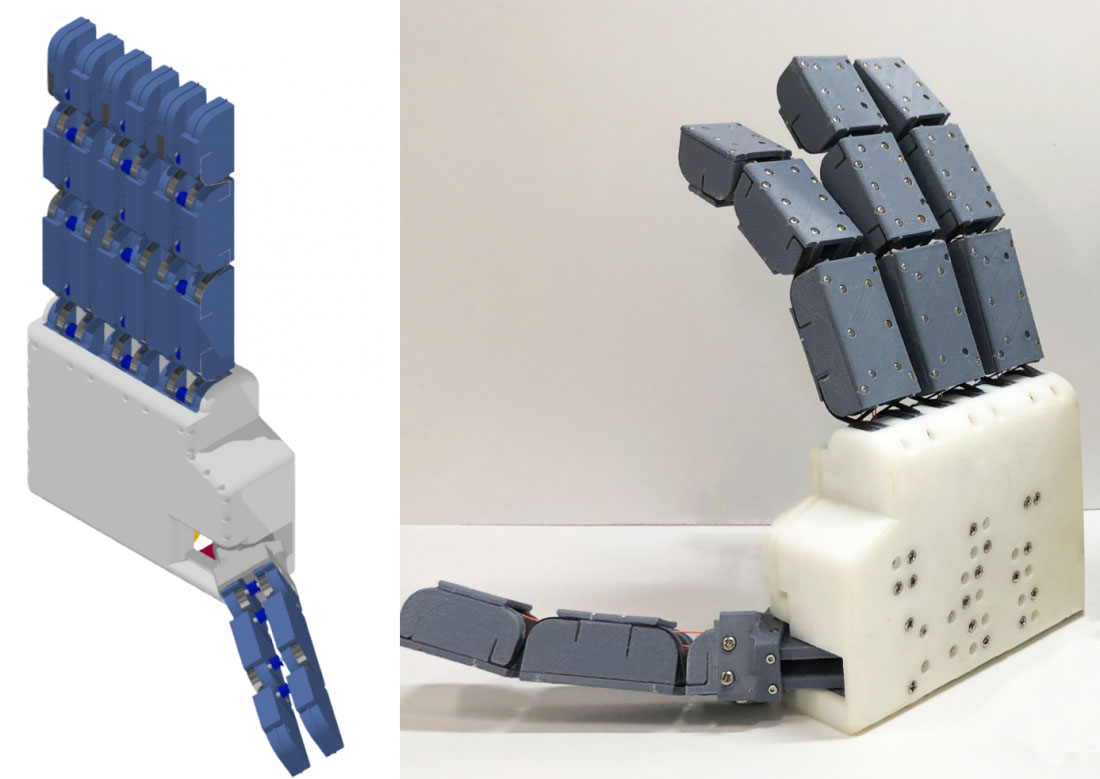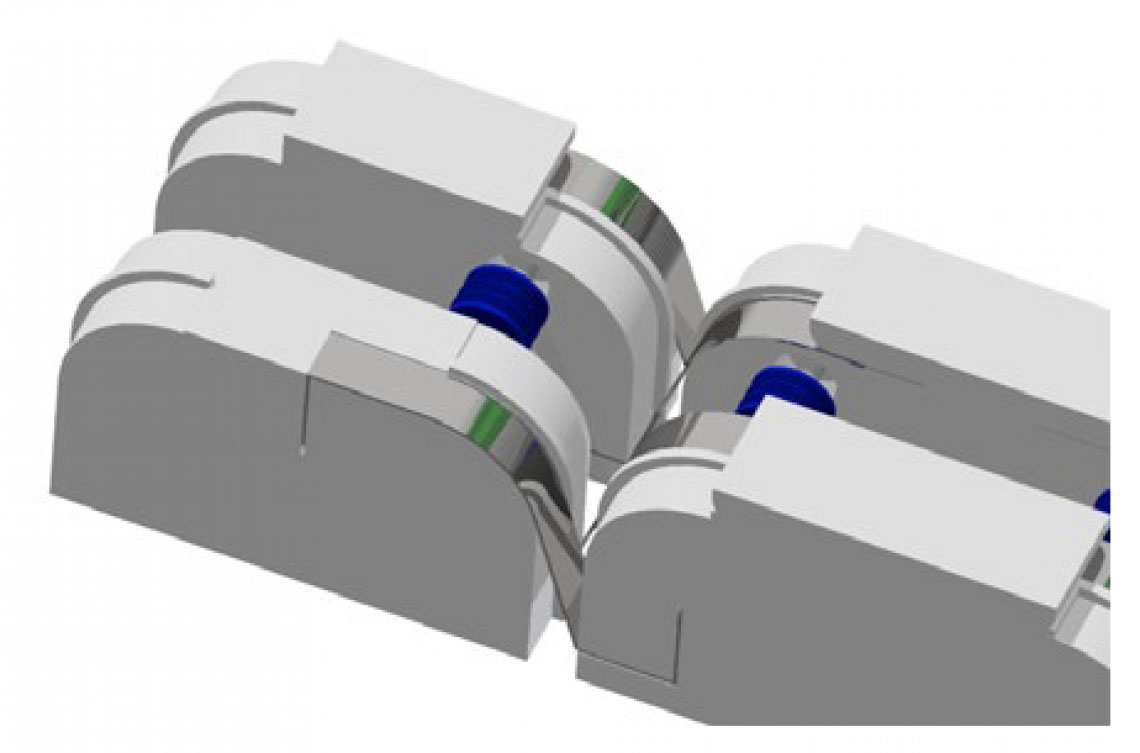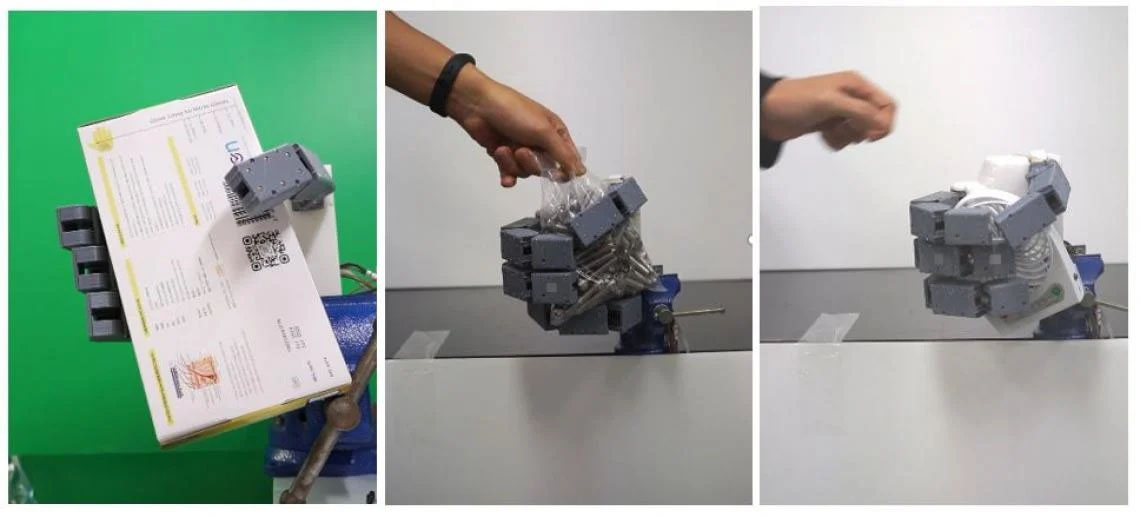| Mar 08, 2022 | |
A helping hand for working robots |
|
| (Nanowerk News) Robotics engineers at South Korea’s Daegu Gyeongbuk Institute of Science and Technology (DGIST) have developed and tested a new human-like mechanical hand that combines the benefits of existing ones while eliminating their weaknesses. | |
| The design is described in the journal Soft Robotics ("Shock Resistive Flexure-Based Anthropomorphic Hand with Enhanced Payload"). | |
 |
|
| The crossed flexure hinge (CFH) system in this robot hand allows more shock absorbency than a pin-jointed robotic hand. (Image: DGIST) | |
| Until now, competing robotic hand designs offered a trade-off between flexibility, strength and durability. One commonly used design employing rigid pin-like finger joints can lift heavy payloads, but is easily damaged in collisions, particularly if hit from the side. | |
| Meanwhile, flexible silicon-based hands are more difficult to break and grasp differently-shaped objects better, but fall short on lifting power. | |
| “Smart industrial and cooperative robots that interact with humans need resilience and strength,” says Dongwon Yun, who heads the DGIST BioRobotics and Mechatronics Lab. | |
 |
|
| The crossed flexure hinge is made of two metal strips arranged in an X-shape that can flex or bend in one position while remaining rigid in others. (Image: DGIST) | |
| The DGIST research team investigated whether a partially flexible robot hand, with joints made of rigid links connected to a structure known as a crossed flexural hinge (CFH), could improve lifting power while minimizing damage in the event of a collision. Generally, a CFH is made of two strips of metal arranged in an X-shape that can flex or bend in one position while remaining rigid in others. | |
| The team made the metal strips that serve as the CFH connecting joints that allow the robotic fingers to curve and straighten like in a human hand. They then demonstrated the robotic hand’s ability to grasp different objects, including a box of tissues, a small fan and a wallet. | |
| The CFH-jointed robot hand was 46.7% more shock absorbent than a pin-jointed robotic hand. It was also stronger than fully flexible robot hands, and was able to hold objects weighing up to four kilograms. | |
 |
|
| The flexible robotic hand can grasp objects of various shapes weighing up to four kilograms. (Image: DGIST) | |
| Further improvements are needed before robots with these partially-flexible hands are able to go to work alongside or directly with humans. The researchers note that additional analyses are needed to determine the most efficient materials for hand design, while further field experiments will help pinpoint the best practical applications. | |
| “The industrial and healthcare settings, where robots are widely used, are dynamic and demanding places, so it’s important to keep improving robot performance,” says DGIST engineering PhD student Junmo Yang, the study’s first author. |
| Source: Daegu Gyeongbuk Institute of Science and Technology |
We curated a list with the (what we think) 10 best robotics and AI podcasts – check them out!
Also check out our Smartworlder section with articles on smart tech, AI and more.

